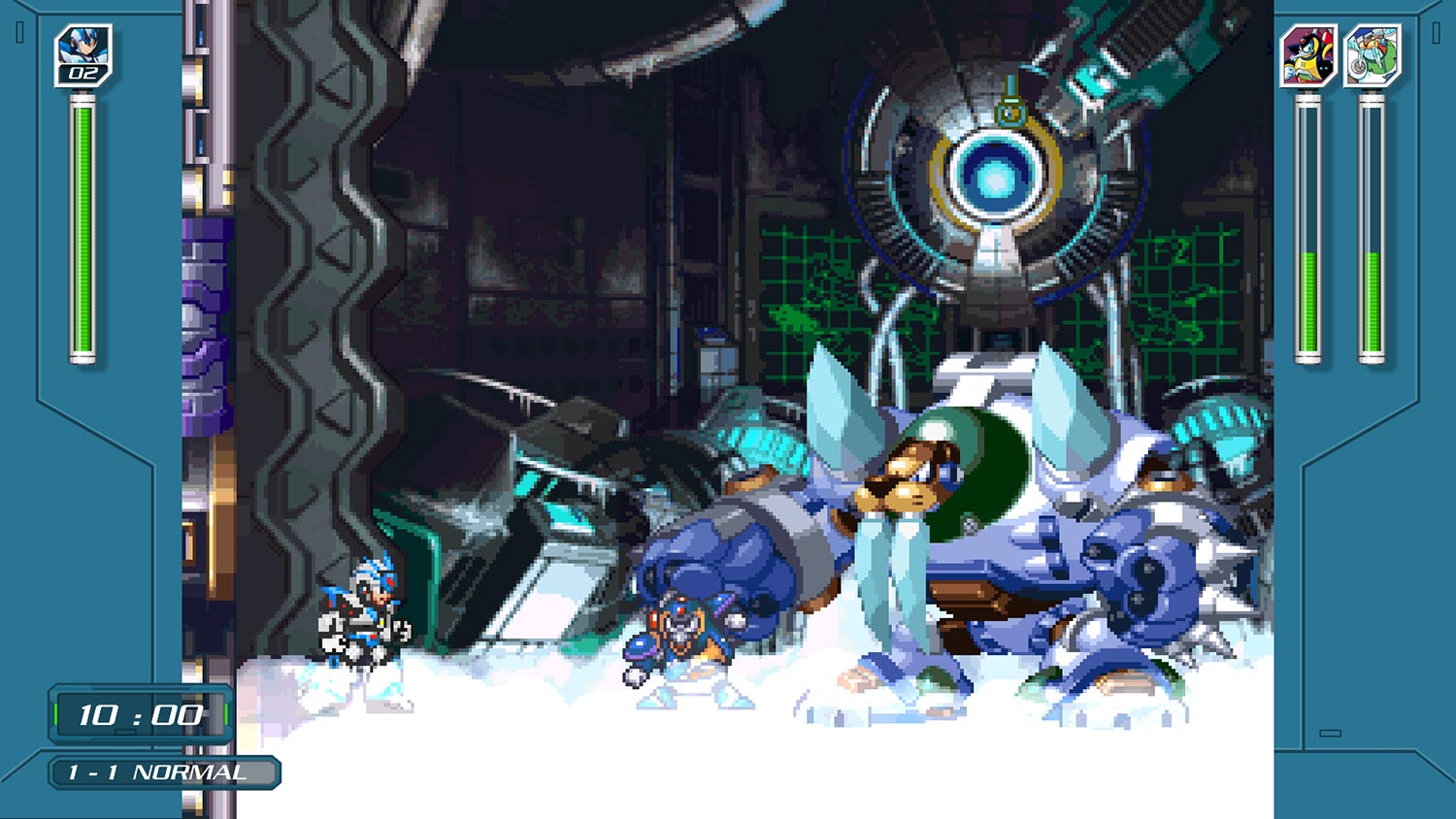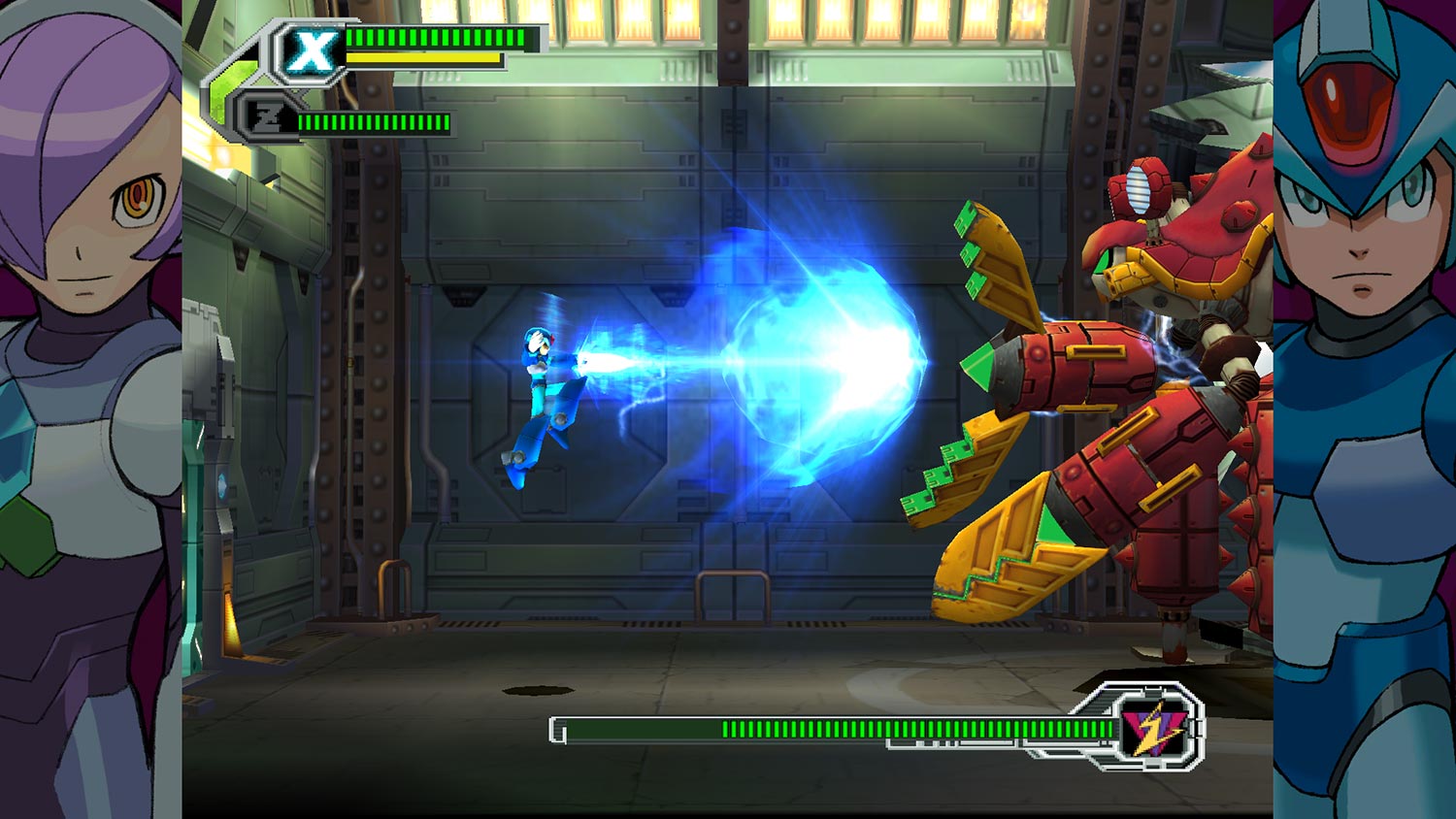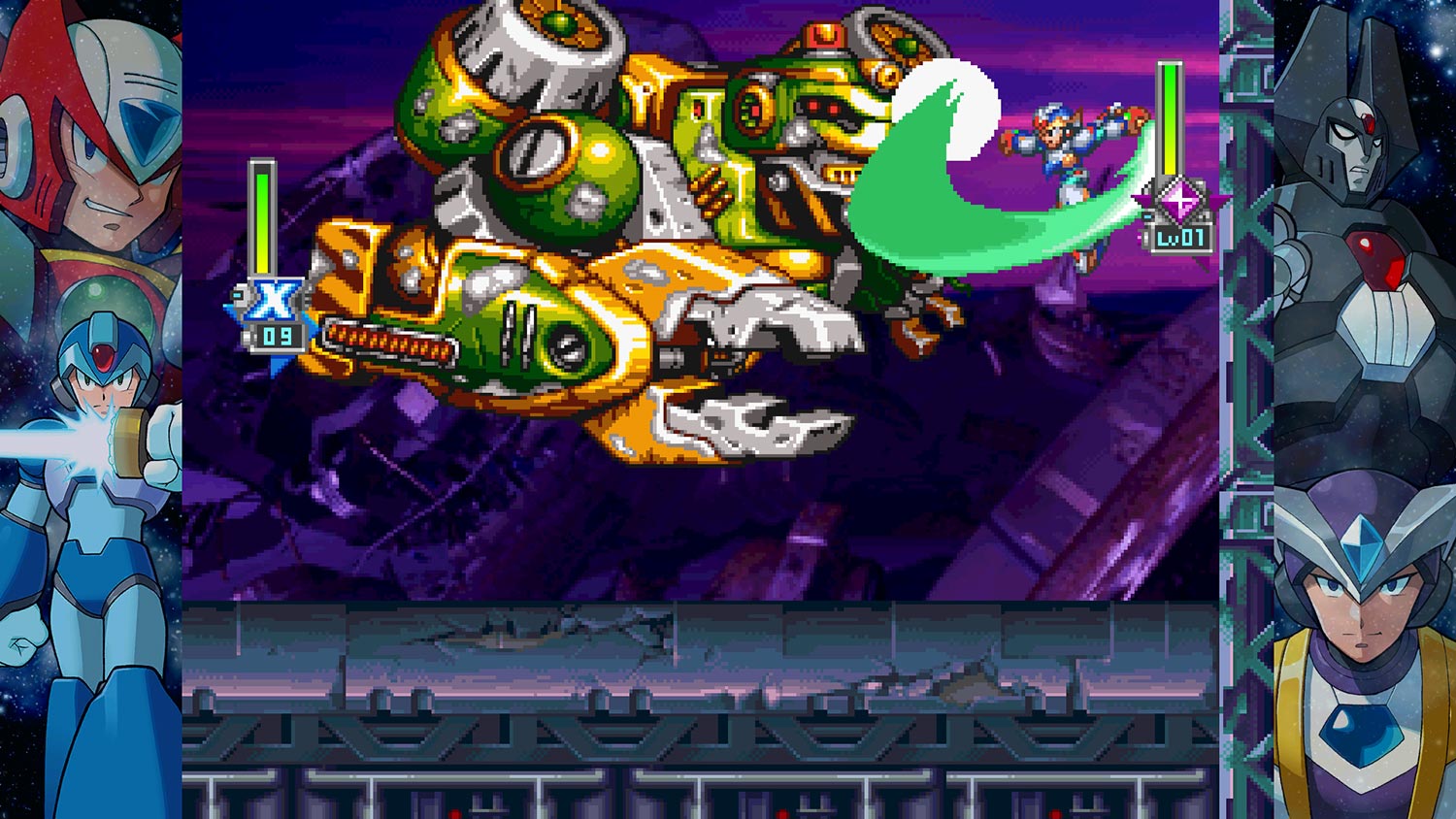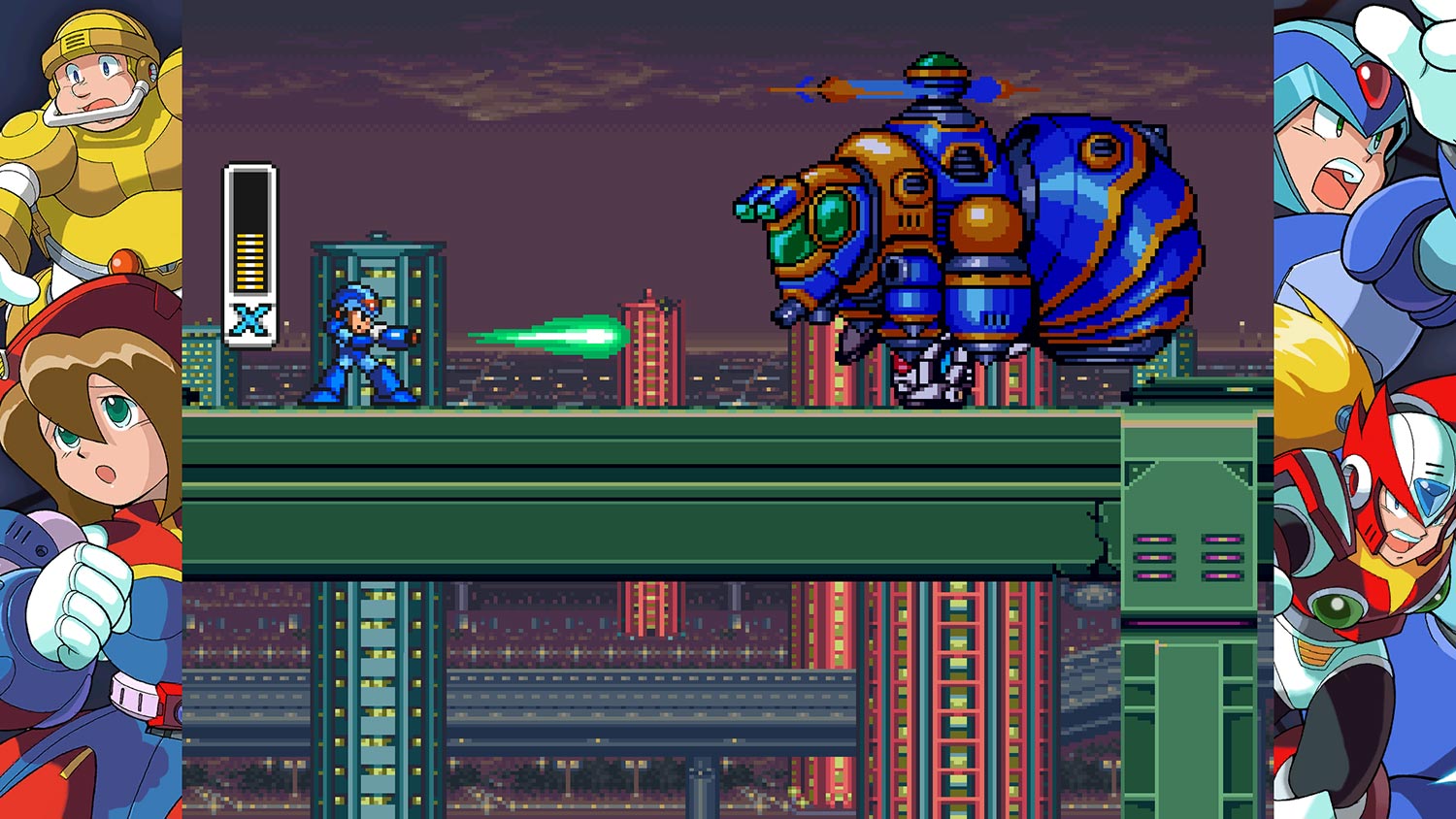Tom's Guide Verdict
In spite of some imperfect emulation, Mega Man X Legacy Collection reminds players why they fell in love with the series.
Pros
- +
Five fantastic games
- +
Attractive modern filters
- +
Lots of content for the price
Cons
- -
Three subpar games
- -
Emulation slowdown
- -
Lackluster extras
Why you can trust Tom's Guide
After the Mega Man X series trailed off back in 2004, fans assumed they'd seen the last of the Blue Bomber's most approachable incarnation. Unlike the straightforward Mega Man series that preceded it, and the maddeningly difficult Mega Man Zero series that came afterward, X almost always hit the sweet spot between tight gameplay, reasonable challenge and engaging story.
While we may never get another new entry in the series, Mega Man X Legacy Collection, Volumes 1 and 2 ($20 per volume; PC, PS4, Switch, Xbox One) remind us why we fell in love with the franchise in the first place. The compilation presents the Mega Man X games in all of their sprite-filled glory, more or less unchanged from when we first saw them in 1993 through 2004.
Despite a few technical missteps and a plethora of unresolved issues from the games' first iterations, the eight games included here are just as much fun to play today as they were back in the day. And a few inventive extras don't hurt, either.
What you get
Capcom has split up the Mega Man X Legacy Collection into two volumes, just as it did with the Mega Man Legacy Collection last year. Volume 1 gets you X1 through X4, first released on the Super Nintendo and PlayStation, while Volume 2 gets you X5 through X8, which were for the PS1 and PS2. Fair enough. Each one also has a Museum Mode, as well as an "X Challenge" mode, where you can fight bosses from multiple games in the series simultaneously.

Not included, however, are the thoroughly decent Mega Man Xtreme 1 and 2 Game Boy Color spin-offs, or the inventive RPG Mega Man X Command Mission. Maybe Capcom is saving them for a future collection, but while we were indulging our Mega Man X nostalgia, it would have been nice to have access to the whole series.
Gameplay
The Mega Man X series tells a sprawling and complex story about Earth in the distant year of 21XX, where humans (sometimes) live in harmony with thinking, feeling androids called Reploids. When these Reploids turn against humanity, they're branded as Mavericks. Professional Maverick Hunters X and Zero stand against compromised robots, and their evil master, Sigma. Over time, Sigma's plans get more complicated and throw into question whether the Maverick leader is responsible for his own actions, or whether X and Zero drove him to madness.

In the three decades since the first Mega Man game came out, you've almost certainly played one of the games or something very similar to it. At first, you take control of Mega Man X, a blue-armored android who can run, shoot, charge up energy blasts, jump across pits, climb walls and do all the other standard stuff you'd expect from a platformer hero. Like his NES predecessor, Mega Man X can also tackle eight bosses in any order and then gain their special abilities upon defeating them.
Get instant access to breaking news, the hottest reviews, great deals and helpful tips.
With the exception of Mega Man X7, every game in the series is a finely tuned side scroller — and, again, with the exception of Mega Man X7, every one of them can be a tremendous amount of fun to play.
Mega Man X's moment-to-moment gameplay still feels fantastic.
Discussing the ups and downs of each individual game in the collection would take thousands and thousands of words, but the games — particularly X through X4 — strike a beautiful balance between simplicity and complexity. Each one starts out with a simple introductory stage, where all you have to do is run, gun and jump. You'll probably have a few false starts as you select stages and discover which bosses are vulnerable to your default X-Buster and which require special weapons for you to defeat them. You'll also notice hidden paths that are inaccessible with your current gear.
As the game progresses, you'll start to piece together how to exploit boss weaknesses, how to find cleverly hidden armor pieces and health upgrades, and how to fight hidden bosses for extra rewards later on. Games like X3, especially, get pretty complicated, with multiple paths through stages, mutually exclusive armor upgrades and four different mechs that you can ride through most stages at one point or another. For games that probably won't take you more than 3 or 4 hours to wrap up, there's an awful lot of stuff in the Mega Man X titles.
MORE: PS4 Games: Our Staff Favorites
There's also the moment-to-moment gameplay, which still feels fantastic. X responds to commands instantaneously, and your charged energy blasts feel like they have some real weight behind them. Bosses are sufficiently difficult to kill with your basic weapons but still provide just enough of a challenge when you find their weaknesses. Wall jumping changes the pace of gameplay so much and saves you from so many unnecessary deaths, I can't believe that Capcom has still not incorporated this feature into its mainline Mega Man games. The early games feel like master classes in tough-but-fair level design.
The later entries
Mega Man X4 is arguably where the series peaks, since you finally get to take control of X's partner, Zero — a red android with long, blond hair and a fearsome energy saber. (You do get to control him briefly in Mega Man X3, but it's more of a bonus than a full-fledged game mode.) X and Zero each have separate adventures (complete with equally ridiculous anime cutscenes), where each one gets discrete boss powers, heart tanks and miscellaneous upgrades. While this means you have to play through the game twice to get the full experience, it's also wonderfully clean and balanced.

Things start going off the rails in X5, though, where you can switch between X and Zero between stages, as well as among three different armors for X. The characters don't share upgrades, meaning you can massively overpower one or slightly kneecap them both. However, both characters get different endings — which also vary depending on how you defeat the bosses — and the game can get quite convoluted. (However, all the bosses are named after Guns N' Roses members, which is pretty cool.)
The convolution continues into X6, but the series doesn't hit its nadir until X7. This ill-conceived experiment removed X as one of the starring characters, and replaced him with Axl, an annoying, early-2000s-version-of-edgy android with a convoluted shape-shifting mechanic. You can unlock X later in the game, but because only one character can benefit from the game's limited — and missable — health and power upgrades, you'll probably have to save him for a second play-through.
To make matters worse, Capcom also decided to bring the series into 3D, which resulted in a lot of terrible camera angles, awkward wall climbing and confusing level design.
MORE: Nintendo Switch vs. PS4 vs. Xbox One: Which Console Should You Get?
Thankfully, Capcom went back to the basics for Mega Man X8, a 2.5D side scroller with a very clear character-upgrade system (and three new, hidden playable characters), but by that time, the damage was done. Between Vol. 1 and Vol. 2 of the Legacy Collection, the former is an easy recommendation; the second has one great game, two decent ones and one that you'll want to play mostly out of morbid curiosity.
Extras
The collections are pretty light on extras. There's the requisite Museum Mode, with lots of concept art and music. You also get the animated special, "The Day of ∑," which gives some questionably necessary backstory about the series antagonist (although it makes me wonder why Capcom didn't just go the whole hog and include Maverick Hunter X, the PSP quasi-reboot where you got to play as both X and recurring villain Vile).

Easily the more interesting extra is X Challenge Mode, which pits Mega Man X, with three weapons of his choice, against 18 bosses culled from the entire series. The twist is that X has to fight two of the bosses at a time, and has only three lives to do it. The mode is suitably difficult, and should keep even series veterans hooked for a few hours. But the trouble is that both volumes include the exact same X Challenge, and the boss order and combinations are predetermined. Once you fight your way through it once, there's not much reason to do it again.
Enhancements
The oldest of the X games came out 25 years ago; the newest came out 14 years ago. That means they needed some serious tweaking to run on modern TVs, which are much bigger and have much higher resolution than back then.
Gamers have a few options on this front. One is to use a modern smoothing filter, which is one of the best retro filters I've ever seen. Colors pop, and character models look smooth, without losing too much detail from the originals. They can also play with the colors slightly dulled and an approximation of scan lines, like on a '90s CRT TV, or simply play without filters. They can also pick from a delightful assortment of screen borders, which make up the difference between modern TVs' 16:9 aspect ratio and the games' original 4:3 aspect ratio.
Colors pop and character models look smooth, without losing too much detail from the originals.
However, the emulation along the way hasn't been perfect. Especially in the earlier games, if you retry a stage or section often enough, you'll find that the system starts to lag, creating strange, distorting lines across the screen that slow down gameplay. As in the original games, there can also be considerable slowdown when a lot of enemies show up on-screen at once.
MORE: How to Stream to Twitch
The Legacy Collection also would have been a good opportunity to clean up some of the glitches, typos and limitations of the original games, but everything has been recorded faithfully, for better or worse. This includes the archaic password system, which uses an awkward workaround to save data. In X-X3, this means you can save only one game at a time, making it difficult to earn some of the game's more esoteric achievements, which often require you to tackle levels in a certain order or use special weapons.
Bottom Line
Mega Man X is back, but his reintroduction could have been a little more stylish. The repeated content and imperfect emulation hint at a few cut corners during the production of Mega Man X Legacy Collection — and even if the presentation had been flawless, there's no getting around that three of the games just aren't that much fun.
On the other hand, Mega Man X is one of gaming's most underrated classic series, and the opportunity for fans to relive his adventures (or experience them for the first time) on modern consoles, including the Nintendo Switch, is a worthwhile pursuit in its own right. At their best, the games still offer hours of thrilling boss fights and brainteasing platforming puzzles. There are colorful characters to encounter and interesting stories to follow. The games can be fiendishly difficult, but they ultimately feel fair, for anyone persistent enough to see them through to the end.
Mega Man X Legacy Collection is a worthwhile modern presentation of a favorite retro series. If that's what you're looking for, you'll come away satisfied. And if you're looking for more — well, there's always the possibility that the compilation is testing the waters for player interest in Mega Man X9.
Credit: Capcom

Marshall Honorof was a senior editor for Tom's Guide, overseeing the site's coverage of gaming hardware and software. He comes from a science writing background, having studied paleomammalogy, biological anthropology, and the history of science and technology. After hours, you can find him practicing taekwondo or doing deep dives on classic sci-fi.
-
tonyleite90 Did you really play all games in this collection? Because X5's bosses aren't named after Guns n' Roses members anymore.Reply

